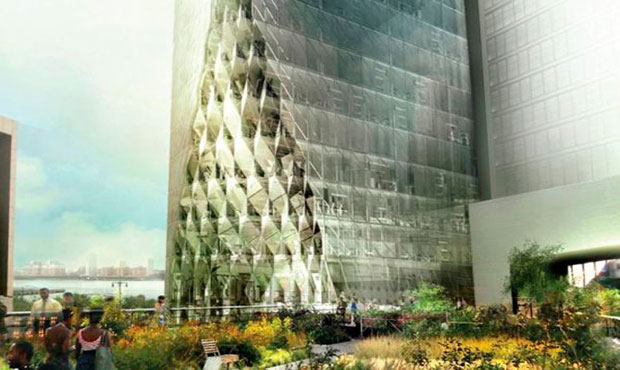
New Manhattan skyscraper allows sun onto High Line
Studio Gang develops ‘solar carving’ technique that uses incident angles of the sun’s rays to sculpt building form
In 2005 the residents of Austria’s smallest town got so fed up with the lack of sunlight in their gloomy valley that they planned something radical. Local lighting firm Bartenbach LichtLabor conceived of putting a series of heliostats on the nearby mountainsides – rotating mirrors, which would bounce sunlight down into the town. This would have gone a long way to improving things for the 600 inhabitants, who don’t see the sun from November to February.
In Manhattan, it’s obviously not mountain peaks blocking the sun, but buildings. In midtown the clustered skyscrapers are to blame, and in downtown it’s the myriad low rises. Architecture practice Studio Gang thinks it can solve this - and put up yet another building at the same time. Its design is for an 186,700sq ft office tower whose sculpted glazed form introduces more, not less, light onto city dwellers.
{media1}
The Chicago-based firm has conceived Solar Carve Tower for the corner of 14th and 10th Avenue, that’s between the Hudson River and the new and much-adored raised green space, the High Line. The technique of ‘solar carving’ was developed by Studio Gang and is defined as “using incident angles of the sun’s rays to sculpt building form”. The architects go on to say: “Solar Carve is sculpted based on geometric relationships between the building and the sun’s path.” Studio Gang - led by Jeanne Gang - made its mark with the 82-storey Aqua tower in their home city. So by shaving back parts of the tower’s corners, 200 more hours of sunlight a year will filter down to park visitors, the firm estimates. It should be ready for occupancy in 2015.
{media2}
On the surface, it appears to be a clever solution to a genuine problem, and is unlikely to fall foul of Mother Nature in the way that Frank Gehry’s Walt Disney Concert Hall in Los Angeles did. When that building opened in October 2003, but as the weather warmed up the following spring, neighbours began complaining of scorching heat reflecting off the shiny metallic angles. To counter that, Gehry had around 4000 sq ft of the building’s facade sandblasted to dull the glare.